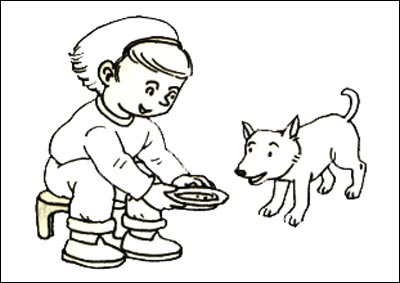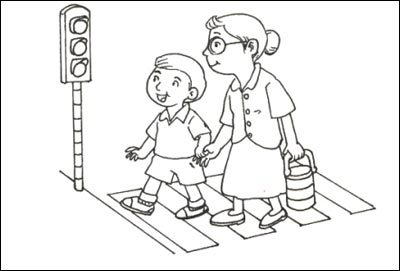Qualifications of Good Children#2
responsible and not harmful to anyone.
QUALIFICATION#1-“MAISAB”
Mai Sab is a person who is disciplined, responsible and not harmful to anyone.
There are 2 Kinds of Mai Sab:
1) Mai Sab Nai Tahng Lok (World)
2) Mai Sab Nai Tahng Dham (Dhamma).
Mai Sab nai tahng lok means people who follow the rules of family, society, and law.
For example, our kids never misbehave, are never naughty, never break the rules, or harass or harass others. They always go to school, finish all the assignments, and they have a nice manner.
Mai Sab Nai Tahng Dham means people who practice at least 5 precepts of Buddhism, and are not harmful to anyone.
For example, our kids never look for revenge, never steal, never have sexual misconduct, never lie, never drink, never take drugs, and never smoke. People who don’t practice the 5 precepts of Buddhism will have a higher risk for becoming harmful people.
herself and is also be able to help others.
QUALIFICATION#2- “MAI NGO”
Mai Ngo is a person who is smart enough to rely on him/herself and is also be able to help others.
There are 2 kinds of Mai Ngo:
1) Mai Ngo Tahng lok (World).
2) Mai Ngo Tahng Dham (Dhamma).
Mai Ngo Tahng Lok means people who have talent in the way that:
1) They can rely on themselves from a very young age. They can help themselves by passing their grades without copying from anyone else (no cheating on exams).
2) They can be responsible for the duties of their work such as finishing all the assignments that parents ask them to do without repeating any steps, e.g.: such as housekeeping.
Whoever has these two factors in life has Mai Ngo nai tahng lok.
Mai Ngo Nai Tahng Dham means people who have talents theat can be classified as right – wrong, good – bad, proper-improper, useful – useless for yourself and others (Samma-Ditthi or right view).
There is an important reason why kids should have Dhamma talent. We could test this ability with these simple questions:
1) What’s the difference between wrong, mistake, and bad?
2) What’s the difference between right, good, and proper?
It’s teas to answer these questions unless we learn Dhamma talent, which might be used more often than real life talent.
1) What’s the difference between wrong, mistake, and bad?
Real life talent is just average talent, which is mostly about earning for survival. It cannot classify the complicated meanings for “bad” in detail but Dhamma talent can.
“Wrong” is the destruction that happens because of stupidity. We don’t really know that it is wrong because our mind is weak or pretending to be ‘Ngo” and end up performing the wrong deed.
“Mistake” is the destruction that happens because it was donse unintentionally. The conscience was too weak so destruction happens without bad intention. In fact, we might want to make it better.
“Bad” is the destruction that is done consciously. We already knew that destruction would occur, but we still did it anyway. Pretending to be ignorant about it results in more suffering, more sins, and more blame from others.
This is why practicing children should develop real life talent as well as Dhamma talent. It is very important because it is basic to the proper development in their daily lives.
2) What’s the difference between right, good, and proper?
We knew the classification of bad already. Now it’s time to learn the classification of good. How does is it get classified in terms of Dhamma talent?
“Right” is whatever we did either with intention or not, without any destruction, harmfulness, or suffering to others or ourselves. Then it only leads to usefulness.
“Good” is a deed that we already knew was the right thing to do and did it carefully with confidence. The more we do well the more it leads to a happier life and mind. After we are done we are so happy.
“Proper” is something that we should do. If we don’t do it, it is fine, but by doing it, it is better, so we do it,
If parents can teach children to be able to classify the good and the bad this much, then the children will be truly brilliant because they have both real talent and Dhamma talent.
Mai Lang Num Jai is knowing to help and share with others to be happy and without any troubles.
QUALIFICATION#3-MAI LANG NUM JAI
Mai Lang Num Jai is knowing to help and share with others to be happy and without any troubles.
There are 2 kinds of Mai Lang Num Jai:
1) Mai Lang Num Jai Nai Tahng Lok (World)
2) Mai Lang Num Jai Nai Tahng Dham (Dhamma).
Mai Lang Num Jai Nai Tahng Lok is a person who is not self – centered but always thinks of others.
For example, before making any decision, we think of the following results for others such as colleagues, friends, and every person in the world. It is being generous and not thinking only of yourself.
Mai Lang Num Jai Nai Tahng Dham is whether rich or poor, we still think of donating, and returning the best to respectful persons and others.
Why do we need to share ? Not being harmful and not being a stupid person is enough, isn’t it?
Many people understand that being unharmful and not stupid is enough because they don’t cause any trouble to anyone. In fact, those are not enough because we have to live with many others in society.
For example, when parents come back from work tired the children just ignore them and never offer any refreshments to them.
Is it Sab (undisciplined and irresponsible) ? It is not because it in’t wrong in Dhamma rules.
Is it Ngo (stupid)? It is not because it isn’t in a school exam.
Is it good? Is not good because it is lacking in generosity (Lang Num Jai). When he/she grows up, he/she won’t know how to share with others. Besides, he/she may take advantage of the family and others.
There’s a story of a mango tree. There’s a mango farm owner. He spends a lot of money for good soil and plants. All the mango trees are treated carefully with total attention to have nice production for consuming and selling. All the trees produce good mangoes for him except for one tree that never produces anything for him, even if he takes care of it so well. Finally, he has to get rid of that tree.
That tree can be compared to a person who never does harm to anyone, but never gives anything to anyone either.
Generosity should not be overlooked at all. If parents don’t teach kids to share and give to others, it’s hard for others to share and give to their children as well. It’ll be hard to ask for help from anyone when he / she has trouble if he/she has never been generous to anyone at all.
Therefore, a person who is lacking in sharing and giving will be gotten rid of like that mango tree.
So parents should teach children to share and give to others as well as to teach them not to be
harmful or stupid, from the foundational three qualifications.
In summary, parents should have an aim to raise children not to be harmful, stupid, or lacking in sharing and giving to persons, which are the basic foundations of their lives. When they grow up, they will be able to develop their talents and other good behaviors easily and will also live proudly.
Meditation - Related Articles
" />
" />
" />
" />
" />
" />
" />
" />
" />
" />
" />
" />








